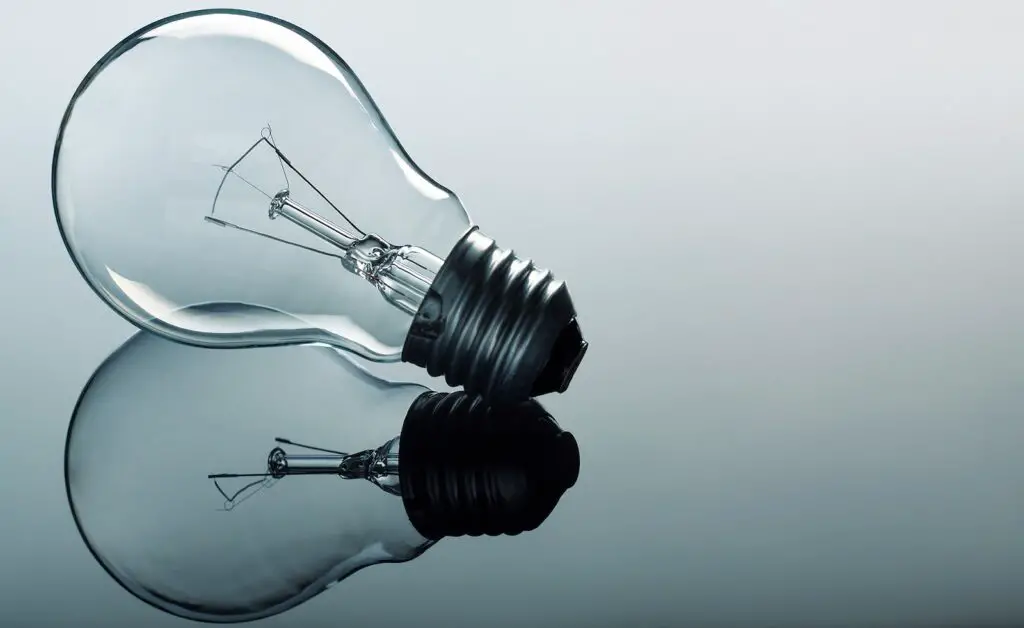If your light bulb is officially rated and approved to be 40 watts, it is highly unlikely that it can lead to a fire on its own.
This is because 40 watt light bulb may not be enough for causing a fire unless the circumstances owing to the fire involve the bulb being overheated or shattering.
These are most likely possible to happen due to a short circuit or an excessive amount of electric current flow into the bulb, which is not monitored.
Additionally, if you have highly combustible items close to the light bulb, it may be another reason for the 40-watt light bulb to start a fire.
Thus, you must know the precautions to be taken while using a light bulb and install an inverter or stabilizer if possible.
How Does a Light Bulb Work?
The primary function of any light bulb is to emit light and utilize the electrical energy passed into it and turn it into heat energy alongside light energy.
This task is performed with the help of a small filament or coil inside the bulb, which is heated up as the electricity passes into the bulb.
Moreover, if you know anything about bulbs in general, you would know that light bulbs are filled with gases including nitrogen to ensure that the evaporation inside the bulb is reduced and it does not lead to a fire.
Nevertheless, you might have seen or felt your light bulb getting hotter and dimming now and then, this is because of the filament getting heated up unevenly.
Let us go further and learn the specifics of using a 40-watt light bulb and also whether it can lead to a fire.
What Happens If You Put a 40-Watt Bulb?
The simple meaning and effect of using a 40-watt light bulb are that, it would produce the energy of 40 watts and also produce light by utilizing electricity that is flowing into it.
40 watts although not too much, is nominal for lighting up an average-sized room or area and is enough power for leading to a short circuit.
If you are using a 40-watt light bulb as compared to LED bulbs or other kinds of bulbs, you might end up using more energy for the same amount of light produced.
Although putting a 40-watt light bulb generally does not lead to any trouble, it naturally has more chances of leading up to a hazard than other forms of the bulb.
Is 40 Watt Light Bulb Very Bright?
As discussed earlier, a 40-watt light bulb is nominal for an average-sized room and can turn out to be enough for lighting up a small room well.
Nevertheless, if you install the same bulb in a room that is too large or in an open area, the brightness of the light bulb may turn out to be too faint and low.
Thus, it depends on the kind of area in which you are using the bulb, and there cannot be a standard answer for the same.
Furthermore, it also depends on the kind of work you need the bulb for, and in case you need the light for high-precision work, a light bulb may not emit enough light for you.
Can a 60 Watt Light Bulb Cause a Fire?
As we mentioned earlier, a 40-watt light bulb may only be enough to light up an average-sized room or area. Similarly, a 60-watt bulb is not much different.
It is unlikely, though possible that a 60-watt light bulb leads to or starts a fire on its own. Certain other contributing factors must be involved in the fire hazard and the most prominent one is to not monitor the signs of overheating or disbalance in the flow of current.
What Are Some Precautions to Take While Using a Light Bulb?
Although there are numerous precautions that one must take while using any electric appliance, these are some of the most important ones:
Read the information printed on the manufacturing package of your light bulb, and understand the wattage and instructions carefully.
Secondly, it is crucial to install the light bulb carefully, you must contact an electrician to affix the light bulb holder and to clean the wires in any case and not do it by yourself.
While holding the light bulb, make sure to clean your hands and hold the bulb with both of your hands.
If you can, try switching to LED light bulbs or other economical and safer options as the traditional light bulbs are more prone to overheating, and also consume more power.
Conclusion
Therefore, although a 40-watt light bulb may not be able to lead to a fire on its own, you have every reason to be cautious about its use and to ensure your safety.
Thus, please read the instructions on your appliance, understand the certified wattage printed on it, and only use electricity when it is needed.
Unnecessarily leaving the bulb on or not monitoring the flow of current can be some of the major reasons behind a light bulb leading to a fire or an even bigger hazard in your home.









